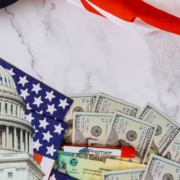Now That PPP Loans Have Ended, What’s Next?
Now That PPP Lending Has Ended, Biz2Credit Small Business Lending Index Finds May 2021 Loan Approval Rates Increase for Banks and Non-Bank Lenders
Small business loan approval percentages at big banks ($10 billion+ in assets) climbed slightly from 13.4% in April to 13.5% in May 2021, however, small banks’ approvals jumped higher from 18.2% in April, to 18.7% in May.
“Loan approvals by small banks rose 0.3% as banks start to assess the favorable economic conditions beginning to emerge as lockdowns ease and more and more people receive a COVID-19 vaccine,” said Biz2Credit CEO Rohit Arora, one of the nation’s leading experts in small business finance. “Pent-up demand from consumers is an attractive narrative for small business owners to use as part of their justification for applying for financing. Banks, especially smaller community and regional institutions, are taking notice of this trend as they begin to open up their lending operations to the post-pandemic reality.”
Next month’s lending figures will be significant now that the federal government’s Paycheck Protection Program (PPP) has completed its second round.
“Businesses that are still reeling from the economic impact of the pandemic will have to look for other sources of funding,” Arora explained. “Look for business loans — especially loans from online or digital providers — to see a jump in activity now that PPP is closed.”
Total nonfarm payroll employment rose by 559,000 in May, and the unemployment rate declined by 0.3 percentage point to 5.8 percent, the U.S. Bureau of Labor Statistics reported on Friday, June 4. Notable job gains occurred in leisure and hospitality, in public and private education, and in health care and social assistance. Many of these jobs are created by small businesses.
Credit unions edged up from a 20.3% approval rate in April, to 20.4% in May 2021. However, other non-bank lenders inched up slightly. Institutional lenders approved 23.6% of funding requests in May, up slightly from 23.5% in April.
Meanwhile alternative lenders approved 24.3% of funding applications in May 2021, up from 24.0% in April.
“Alternative lenders saw a significant increase in approval rates in May while at the same time handling an ever-larger number of loan requests, thanks to the shift towards online finance in the small business space,” Arora said. “With the conclusion of PPP, banks are focusing on forgiveness and may not be ready to ramp up small business lending that is not government-backed.”
“Borrowers will have to turn to non-bank sources of funding, including alternative lenders, institutional lenders and credit unions,” he added. “These lenders are all starting to respond to the demand, and many will see their approval rates rise as customers who used to get loans from a bank are now looking to alternative sources of financing.”
About Premier Business Lending
Founded in 2015, Premier Business Lending has arranged more than $3 billion in small business financing. The company is expanding its industry-leading expertise in funding medium to small business by opening additional loan offices across the country while hiring knowledgeable financial consultants. Visit premierbusinesslending.com or Facebook, and LinkedIn.



